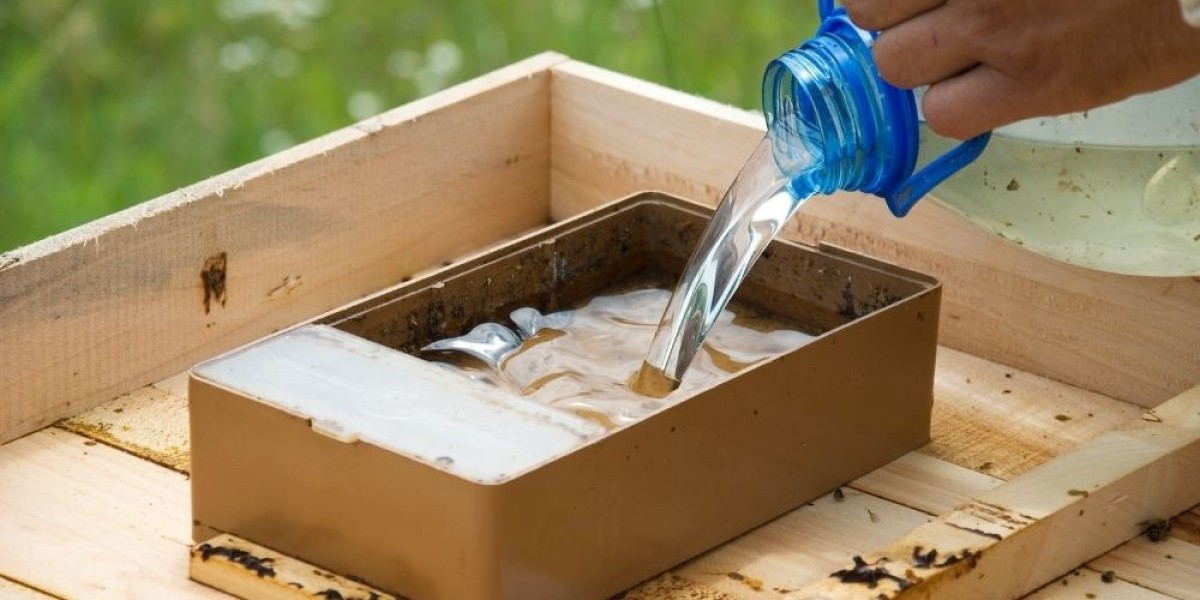For many beekeepers, the honey harvest is the highlight of the season. After months of nurturing colonies, protecting hives, and watching the bees gather nectar, the reward comes in the form of golden honey. But for the bees, the work doesn’t end here. Once the honey is removed, colonies need time and support to recover, rebuild strength, and prepare for the challenges of late season and winter.
One of the most important parts of this recovery process is feeding—whether through open feeding or closed feeding methods. Just as crucial, especially for newer beekeepers, is wearing the right protective clothing. Investing in the best bee suits for beginners not only ensures safety but also boosts confidence during hive inspections and feeding sessions.
This blog will explore after-harvest recovery plans, feeding strategies, and protective gear so that both you and your bees thrive long after the honey harvest is over.
1. Why After-Harvest Recovery Matters for Beekeepers
After the honey flow, colonies may find themselves short on resources, particularly if the local nectar flow has ended. While bees are natural foragers, the absence of abundant nectar means they rely heavily on what’s left in the hive—or what you provide.
A weakened colony without sufficient reserves may struggle to survive the winter. That’s why recovery feeding plays such a central role. Sugar syrup, pollen substitutes, and careful monitoring ensure bees rebuild their strength, maintain brood production, and are ready for colder months.
For beginners, this period is also an excellent time to develop habits that lead to long-term success. Wearing lightweight bee suits or ventilated bee suits for hot climates keeps you safe and comfortable during frequent checks while you provide the colony with food and support.
2. Open Feeding vs. Closed Feeding: Key Differences
One of the big decisions after harvest is whether to use open feeding or closed feeding methods. Both approaches have their place, and the choice often depends on your beekeeping goals and the condition of your apiary.
Open Feeding
Open feeding involves placing sugar syrup in a communal feeder outside the hive. Bees from multiple colonies can access it, and it mimics a natural nectar source.
Advantages:
Quick and easy setup.
Can feed multiple colonies at once.
Reduces the need to disturb hives repeatedly.
Disadvantages:
Encourages robbing behavior among colonies.
Attracts wasps and other pests.
Doesn’t ensure equal distribution—stronger colonies take more.
Closed Feeding
Closed feeding, on the other hand, places syrup inside each hive using feeders like frame feeders, top feeders, or jar feeders.
Advantages:
Prevents robbing and reduces competition.
Ensures every colony receives proper nutrition.
Keeps pests and intruders out.
Disadvantages:
Requires opening hives more often.
Slightly more time-consuming.
For most new beekeepers, closed feeding is the safer option. Not only does it reduce stress for your colonies, but it also allows you to observe hive conditions while wearing the best bee suits for beginners—a key confidence booster.
3. Feeding Strategies for Strong Colonies After Harvest
Feeding isn’t just about pouring sugar syrup into a feeder. The ratios, timing, and frequency of feeding make a huge difference in colony health.
Sugar Syrup Ratios: A 2:1 ratio (two parts sugar to one part water) is often recommended for fall feeding. This thicker syrup helps bees store reserves quickly. A 1:1 ratio, by contrast, is better suited for stimulating brood rearing earlier in the season.
Preventing Robbing: Feeding should be done in the late evening to discourage robbing behavior. Strong smells of syrup can attract neighboring colonies, so minimizing exposure is important.
Equipment for Feeding: Beginner beekeepers often underestimate how useful the right equipment can be. Along with feeders, always keep a reliable bee suit and gloves ready. Even gentle colonies can become defensive during feeding, so wearing affordable bee suits for beginners makes the job less stressful.
4. Essential Gear for After-Harvest Feeding
When bees are hungry or stressed, they can become more defensive. That’s why protective gear is just as important as the feeding process itself.
Best Bee Suits for Beginners: Full-body coverage provides maximum protection. For new beekeepers still learning hive behavior, this is non-negotiable.
Lightweight Bee Suits: Ideal for warmer climates, allowing you to feed bees without overheating.
Ventilated Bee Suits: Especially useful in hot weather, where long feeding sessions can otherwise become uncomfortable.
Beginner Beekeeping Equipment: Alongside bee suits, essentials include hive tools, feeders, and beekeeping gloves to ensure smooth recovery management.
By pairing strong feeding strategies with the right clothing, you can reduce risks and make the after-harvest season less stressful for both you and your bees.
5. Common Mistakes in After-Harvest Feeding
Even experienced beekeepers make mistakes, but beginners in particular can benefit from avoiding these common errors:
Overfeeding or Feeding Too Late
Feeding syrup too late in the season may not give bees enough time to dehydrate and store it properly.Using the Wrong Syrup Concentration
A thin syrup in late season can ferment quickly, creating health risks for bees.Ignoring Hive Inspections
While feeding helps, it doesn’t replace inspections. Bees also need pollen stores and healthy brood to survive.Neglecting Protective Gear
New beekeepers sometimes underestimate bees’ defensiveness during this period. Wearing the best bee suits for beginners ensures you can focus on the task instead of worrying about stings.
6. Long-Term Recovery and Colony Strengthening
After-harvest recovery is not just about immediate feeding—it’s about ensuring your colony is strong and resilient for months ahead.
Monitoring Brood Nest Development: A healthy brood pattern shows the queen is active and the colony is stable.
Ensuring Pollen and Nectar Stores: Bees need both carbohydrates and proteins. Supplementing with pollen patties may be necessary if natural sources are limited.
Preparing Hives for Winter: Reducing entrances, insulating hives, and ensuring proper ventilation are all crucial. Feeding now ensures bees have the reserves they’ll need when they cluster through the cold months.
By following these steps, even beginners can guide their colonies into winter with confidence. And with the protection of high-quality bee suits, you can work calmly and safely every step of the way.
Conclusion
After the excitement of the honey harvest, the focus shifts to ensuring bees recover, rebuild, and prepare for the months ahead. Choosing between open feeding and closed feeding methods is an essential decision, and pairing it with the right feeding strategies can mean the difference between a strong, thriving colony and one that struggles through winter.
For beginner beekeepers, the journey doesn’t stop at feeding—the right equipment matters too. From feeders to the best bee suits for beginners, having reliable protective gear ensures you can manage your hives confidently and safely.
By combining thoughtful after-harvest feeding plans with proper protective clothing, you set the stage for healthier colonies, better overwintering success, and a more rewarding beekeeping experience.






